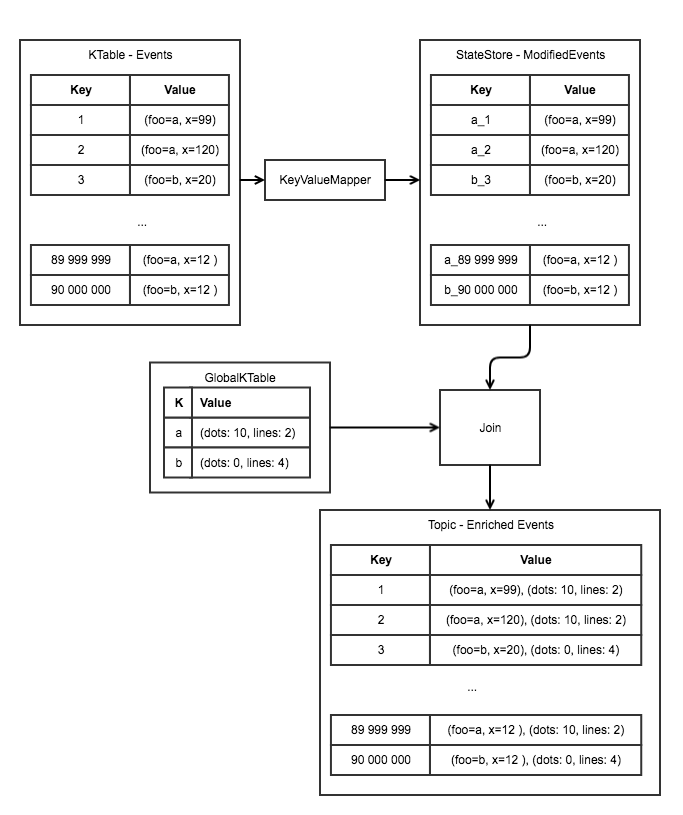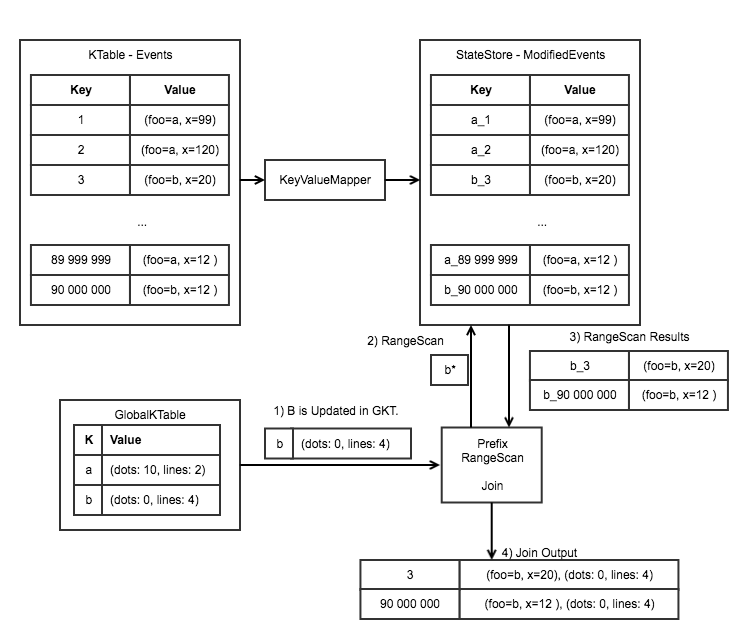This page is meant as a template for writing a KIP. To create a KIP choose Tools->Copy on this page and modify with your content and replace the heading with the next KIP number and a description of your issue. Replace anything in italics with your own description.
Status
Current state: Under Discussion
Discussion thread: here [Change the link from the KIP proposal email archive to your own email thread]
JIRA: KAFKA-4628
Please keep the discussion on the mailing list rather than commenting on the wiki (wiki discussions get unwieldy fast).
Motivation
There are a number of tools which liberate relational data into the event streaming domain, such as Kafka Connect and Debezium. These pull the relational rows from a database and convert them into events for use in downstream Kafka Stream consumers. One of the main issues with this is that the data is often still highly normalized, and these normalized relationships prove difficult to use with existing Kafka Streams. At this point, it is often desirable to denormalize some of these relationships using the Kafka Streams API.
One main requirement that I have run into several times is that the denormalized data be updated should any of its components change. This is required for a consistent view of the data for all downstream consumers. To do this, we must perform stateful joins using KTable to KTables. Unfortunately, this approach also requires that we rekey the data on the foreign key, which while supported, introduces a number of its own issues. Furthermore, solutions to this approach become untenable as the data volume grows. Further details into the problems with this approach can be seen by this excellent blog post by Dan Lebrero. http://danlebrero.com/2017/05/07/kafka-streams-ktable-globalktable-joining-reference-data/
For relational data with a very narrow domain, rekeying on the foreign key becomes prohibitively expensive in terms of maintaining the data structures. Additional complexities about managing order, duplicate outputs and race conditions also begin to apply. In fact, the narrower the domain of the foreign keyed data, the worse the problem becomes. However, with KTable joins to GlobalKTables, the narrower the domain of the data the easier it is for the globalKTable to provide easy and performant joins without managing all of this overhead.
Public Interfaces
Briefly list any new interfaces that will be introduced as part of this proposal or any existing interfaces that will be removed or changed. The purpose of this section is to concisely call out the public contract that will come along with this feature.
A public interface is any change to the following:
Binary log format
The network protocol and api behavior
Any class in the public packages under clientsConfiguration, especially client configuration
org/apache/kafka/common/serialization
org/apache/kafka/common
org/apache/kafka/common/errors
org/apache/kafka/clients/producer
org/apache/kafka/clients/consumer (eventually, once stable)
Monitoring
Command line tools and arguments
- Anything else that will likely break existing users in some way when they upgrade
Proposed Changes
Describe the new thing you want to do in appropriate detail. This may be fairly extensive and have large subsections of its own. Or it may be a few sentences. Use judgement based on the scope of the change.
- A new KTable to GlobalKTable inner and left join.
- GlobalKTable's output can be attached to a processor, to drive the join from the right side of the KTable-to-GlobalKTable join.
- Use RocksDB prefix RangeScan to join from the Right, using a rekeyed table.
Problem

Proposal

GlobalKTableToKTable(inner/left) join mechanism.

KTableToGlobalKTable(inner/left) join mechanism.

Compatibility, Deprecation, and Migration Plan
- What impact (if any) will there be on existing users?
- If we are changing behavior how will we phase out the older behavior?
- If we need special migration tools, describe them here.
- When will we remove the existing behavior?
Rejected Alternatives
If there are alternative ways of accomplishing the same thing, what were they? The purpose of this section is to motivate why the design is the way it is and not some other way.y